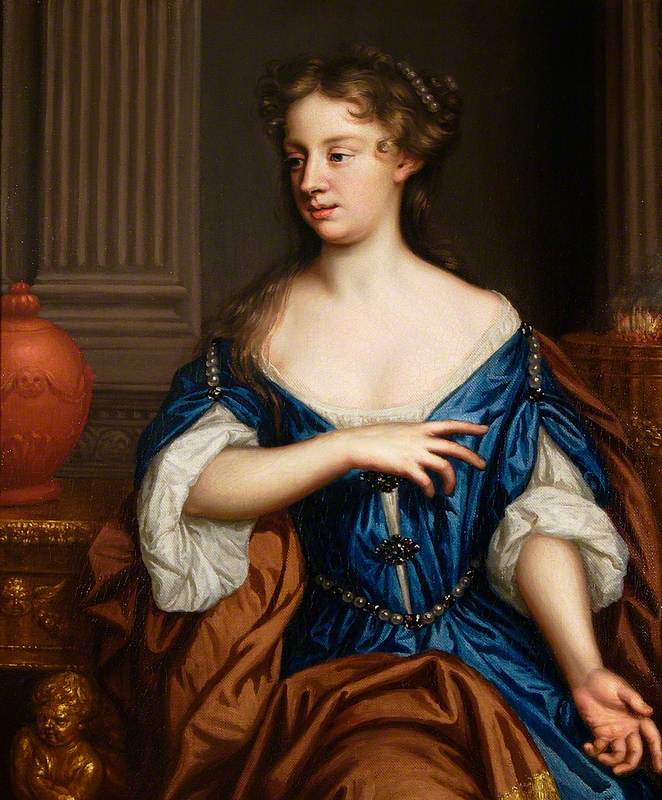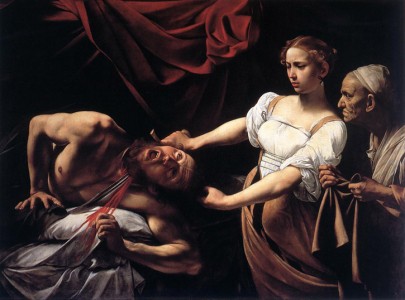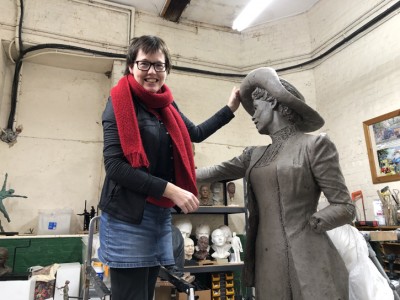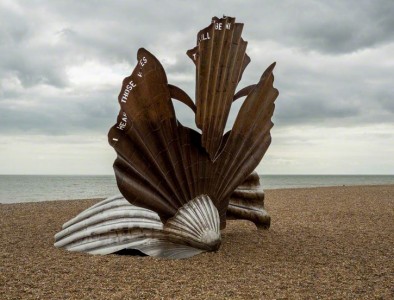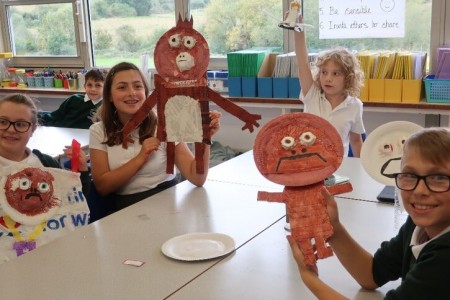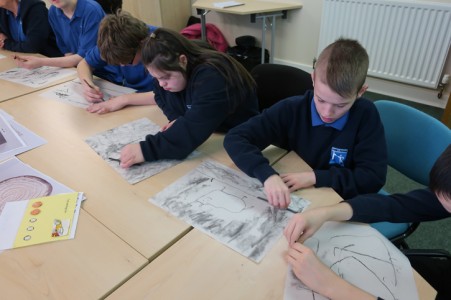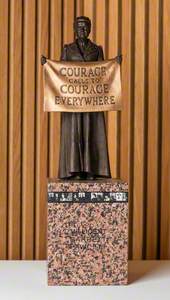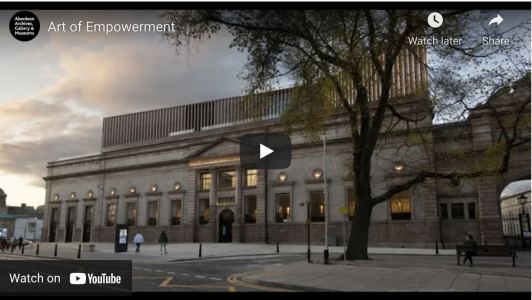The following Home School activity is suitable for late primary and early secondary age.
I'm Hazel Reeves and I tell stories in bronze. How do you tell your stories? Whether you use words or pictures, you are tapping into people's imagination. You are taking them on a creative journey.
As a sculptor, I can't rely on words. My stories need to be conveyed through the sculpture itself and its surroundings. From every angle, the statue needs to engage the passing crowds: to make them stop, walk all around it, have a selfie with it, be inspired to find out more.
Let's take the example of my statue, Rise up, women, of the political activist and inspiring leader of the suffragettes, Emmeline Pankhurst (1858–1928).
'Rise up, women' (Emmeline Pankhurst, 1858–1928)
2018
Hazel Reeves and Bronze Age Sculpture Casting Foundry 
Here is the statue of Emmeline Pankhurst – affectionately known by local people as Our Emmeline – unveiled on 14th December 2018, exactly 100 years since the first women in the UK voted in a general election.
This video gives you a 360-degree, all-round view – you can also join me in adopting Emmeline Pankhurst's stance.
Questions to answer after watching the video:
• What did it feel like to get into Emmeline's pose?
• Could you imagine yourself at the centre of a large noisy crowd?
• What story do you think the statue is telling?
• How does Emmeline's stance help to tell the story?
• Is it significant that she is standing atop a kitchen chair?
I invited the crowd of 7,000 people at the unveiling to also adopt Our Emmeline's pose.
The unveiling with model
It is rare to see statues of women on our streets, and even rarer to see a statue of a dynamic, active woman. There was only one way I could show Emmeline.
What was the story I wanted to tell?
How do I come up with the story and develop it into a sculpture? The starting point is research. I read Emmeline Pankhurst's fascinating autobiography, My Own Story. It's here that she talks of the suffragettes' rallying cry, 'Rise up, women'. I capture Emmeline as the courageous, determined and dignified activist, at a pivotal point – 1908/1909 – in the struggle for gaining the right to vote (women's suffrage).
Angered by the Government repeatedly breaking their promises, enough was enough, time for action. The suffragettes are on the streets, ringing bells, summoning people from their homes and offices. Someone grabs a kitchen chair and the five-foot Emmeline climbs atop. We catch her mid-rousing speech, arm-outstretched, urging women to rise up and demand their right to vote.
At this stage I start collecting photos of Emmeline and other suffragettes, to inspire me (see below). Then I start to put my ideas down on paper before I start sculpting a small model (or maquette). We will see more examples of this later.
Photo references for the statue 
Can you guess why I found each of these images particularly inspiring? Five or six of these images are of Emmeline Pankhurst herself – can you spot which?
Now you have an insight into my creative process, it's time to start your own.
What stories are other statues trying to tell?
Time for you to do some research. Have a look online for images of statues. Pick one you like. What story is it telling you? Try adopting the statue's stance. Does this help you understand what the sculptor is trying to achieve?
Here are some other examples. What story do you think they are telling?
Courage Calls to Courage Everywhere
2018
Gillian Wearing (b.1963) 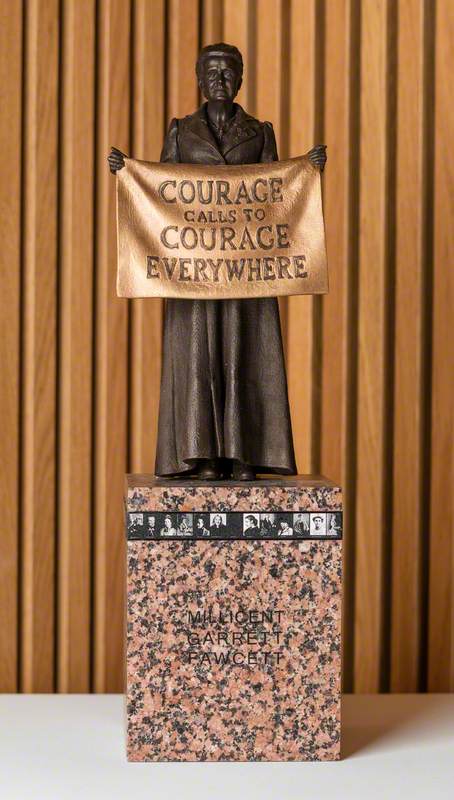
Courage Calls to Courage Everywhere is a model (maquette) of the statue of the suffragist Millicent Fawcett (1847–1929), by Gillian Wearing. The final statue was unveiled in Parliament Square, London, in 2018.
Preparing the 'Cracker Packers' statue for its unveiling 
Here is another of my statues. This is unusual. It celebrates the lives of working women – the Cracker Packers – the biscuit factory workers from Carr's (now McVitie's) in Carlisle. The current and retired Cracker Packers helped me to design the statue pose during a workshop. It was unveiled on International Women's Day, 8th March 2018.
Who do you want to see celebrated in bronze?
When I was young, I never noticed statues on the streets. Why? Because they weren't relevant to me. I didn't see someone like me. It was only when I became a sculptor I started to notice statues. And then I became much more aware of whose faces I didn't see celebrated in bronze.
Who do you think is missing? If you were to commission a statue of someone, who would it be? And why do you think they deserve a statue?
Designing your statue
You have decided who you want to celebrate, but what story do you want to tell? For this, you might need to do a little bit of further research. How could the stance of the statue help convey the story?
In your statue design, would you include additional things that help to tell the story? For example, with my Emmeline Pankhurst statue, I included a brooch at her throat that was awarded to those suffragettes who had been on hunger strike in prison.
There are further things to think about, like, where would you place the statue and why? Would you want your statue on a plinth or at ground level?
You could ask a friend or family member to look at you in your favourite pose for your statue. Do they understand the story you are trying to tell? Is there something interesting for them to see from every direction, as they walk around you? Before I even do any drawings, I often work with a live model, dressed up, to try out poses. Here is my model for Emmeline, Sarah Jenkins, in the studio.
Trying out poses with Sarah Jenkins in the studio 
So, there's a lot to think about. Are you ready to put your ideas down on paper?
Drawing your ideas
Do four drawings of your proposed statue (on A4 paper), from different views – from the front, left-side, right-side and back. They don't have to be 'masterpieces'.
Initially, I do rough drawings to help my client understand my design for the statue. Here are some images of my rough drawings for the Emmeline Pankhurst statue. As you can see, I am focusing on the gesture and movement in the statue, not the details of the face or clothing.
Gestural drawings for 'Our Emmeline' statue 
If you have some stiff card (the length of four pieces of upright A4 paper side by side), you can stick the four drawings next to each other onto the card. You can then carefully bend the card between each drawing. And before you tape the two edges of the card together, you could decide to cut away some of the excess card around the top of the drawings.
You should now have a four-sided, standing, drawing, of your statue. Are you now happy with your design?
Making a maquette of your statue
If you have time, and the materials, you are now ready to work on your maquette of the statue in 3D.
I start with a rough maquette in wax or clay, before I work on the final detailed maquette, which is usually cast in bronze. Here you can see the rough maquette of Our Emmeline I made in wax and photographed from all sides. Again, I have focused on the gesture of the statue rather than the detail, which comes later.
Rough maquette in wax of 'Our Emmeline'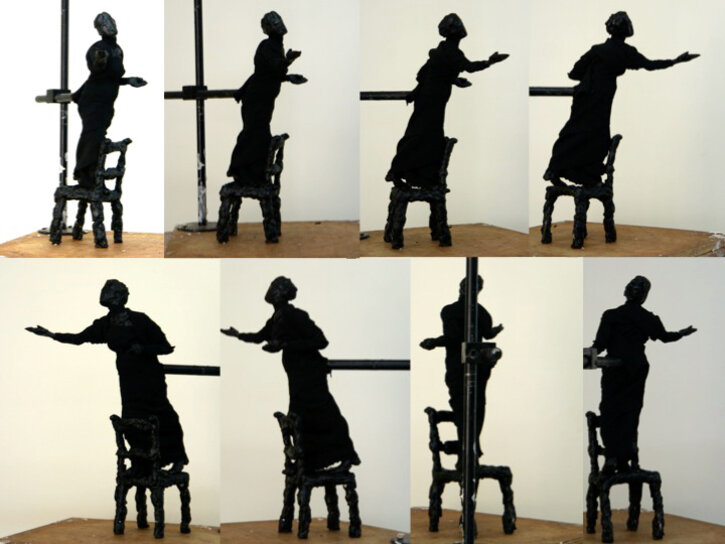
You will need a modelling material like clay, or an air-drying or non-drying modelling material. I usually make an armature – that supports the clay – out of aluminium wire. It looks like a stick figure. You can see examples of simple armatures made out of wire on the Culture Street website, including one for a soft wax horse sculpture and one for a clay head sculpture.
But you could do it without an armature, propping up your sculpture with a barbecue stick. Alternatively, you could start with a block of clay – and carve your statue out of it using your fingers or tools. Here is the final model of Emmeline that I made in clay and then cast in bronze.
The bronze maquette of Emmeline
The next stage is scaling it up to the full size – Our Emmeline is 230 cm tall including the chair. What do you think your small model would look like if you also made it six times larger? See the tiny Emmeline maquette next to the metal armature for the full-size statue. What was the next step? Applying half a tonne of clay to the armature!
The maquette next to the full-size armature 
I will leave with a short film of the unveiling of the Our Emmeline statue. From the comments you hear from the crowds, and particularly young people, do you think the design of the statue was successful?
(Filming credit: Huckleberry Films and the Our Emmeline Project)
Who will you invite to the unveiling of your statue? Invite me too, please.
Hazel Reeves, artist
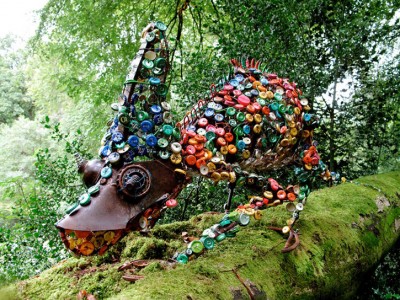

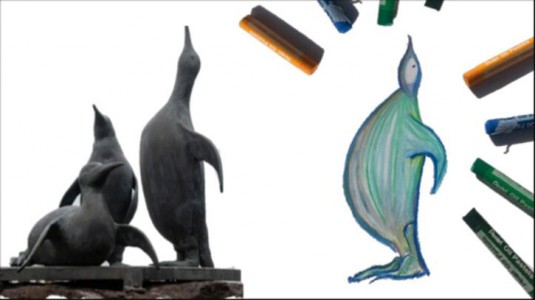




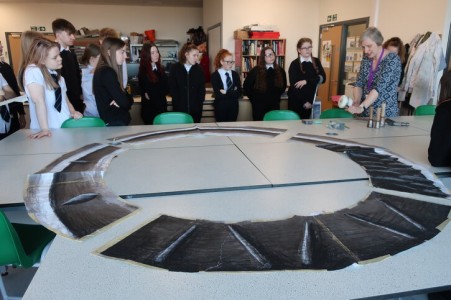



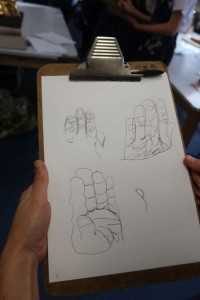
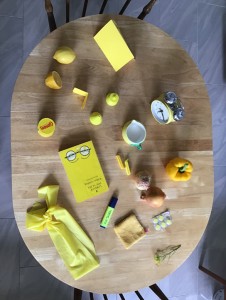
-2.jpg)


